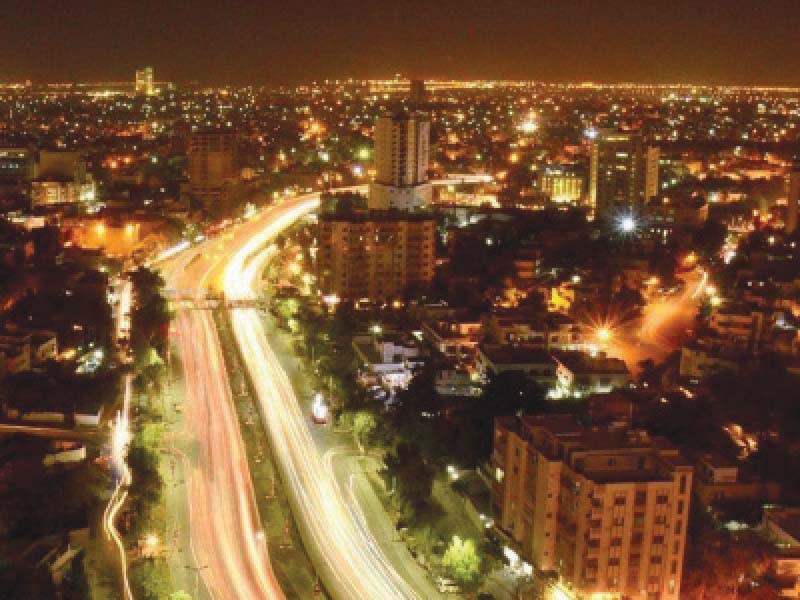
Under the recurrent cycle of boom and bust, Pakistan’s economy has hit hard the bottom and is set to rebound with a requirement for foreign financing estimated at a much lower $32 billion than previously projected for the current fiscal year 2023.
Accordingly, the current account deficit (CAD) is anticipated to cut sharply to $8.7 billion against general consensus for $10-15 billion for FY23, and the central bank’s key policy rate has peaked at the current level of 15%.
The developments in the offing are showing “signs of economic stability,” Topline Securities said in a comprehensive report on Pakistan’s economy’s outlook published on Monday.
This is time to re-enter into Pakistan Stock Exchange (PSX), as the benchmark KSE-100 index is projected to grow 25% to 52,000 points over the rest of 11-month (Aug-Jun) of the current fiscal year 2023, it said.
It, however, projected economic growth to slow down to 3.8% compared to the government target of 5% for FY23.
Tightening of fiscal policy (withdrawal of subsidies and new taxes) and monetary policy (prevailing higher interest rate), falling global commodity prices and the market-driven rupee-dollar exchange rate has significantly improved the outlook on current account.
“We estimate that current account deficit (CAD) to clock in at $8.7 billion (2.3% of GDP) in FY23 as compared to $17.4 billion in FY22 (4.5% of GDP).”
This is lower than market expectations of $11-15 billion and the State Bank of Pakistan (SBP) recent estimate of $10 billion. This also compares favorably with Pakistan’s last 5-year average CAD of $11 billion, it said.
The current account deficit may cut sharply on the back of an expected drop in oil price in global markets. Accordingly, Pakistan’s energy import bill is estimated to reduce by $2-2.5 billion in FY23, another brokerage house said the other day.
Secondly, the import of Covid-19 vaccines may reduce significantly by $2.5-3 billion over the year.
Thirdly, the one-time subsidised loan scheme for the import of plants and machinery for industrialisation – TERF – has come to the end. So, these imports would cut down by $2-2.5 billion in the year.
Besides, the measures taken by the government and the central bank to cut imports including the imposition of new taxes and an increase in rate of previous taxes would additionally cut imports by another $2.5-3 billion in FY23, it estimated.
Topline Securities said the improvement in CAD in FY23 will be led by import compression as it anticipates imports (as reported by SBP) to clock in at $62 billion in FY23 as against $72 billion in FY22.
Reduced CAD will also be supported by an expected drop in services deficit which is expected to decline by 25% to $3.9 billion in FY23 compared to $5.2 billion in FY22, it added.
However, exports are likely to slow down to $30 billion, and workers’ remittances to remain steady at $32 billion in FY23.
Foreign financing needs
The downward revision in CAD’s projection by the research house has sharply cut the requirement for foreign financing to $32.2 billion for the current fiscal year 2023.
Earlier, the government estimated foreign financing needs in a range of $36-41 billion for the year (FY23), it was learned.
“Pakistan’s total financing needs of FY23 is estimated at $32.2 billion which stems from debt repayment of $23.5 billion and CAD estimate of $8.7 billion,” Topline said.
“We believe that Pakistan will be able to meet the financing needs for FY23 as we project available financing of $33.8 billion (SBP expects $35.7 billion).”
Out of this $33.8 billion, additional borrowing from IMF will be around $4 billion, and inflows from foreign direct investment (FDI) and portfolio investment are estimated at $1.7 billion. Borrowing from multi-lateral, bi-lateral borrowing, and rollover of loans from friendly countries is anticipated at $28 billion.
“As a result of this, we expect SBP liquid foreign exchange reserves to reach $11.5 billion by June 2023 compared to $8.4 billion as of July 29, 2022.”
Inflation, rupee
Topline believes inflation will remain close to SBP’s revised estimate of 18%-20% in FY23 due to adjustments in energy tariffs, currency devaluation, and rising food inflation. “We expect year-on-year CPI to peak in August 2022 (this month in the range of 25%-28%) and start falling from September 2022 and onwards.”
Falling imports and likely resumption of the IMF loan programme and other inflows will bring much-needed stability to the Pakistani rupee (PKR) as it has remained one of the worst performing currencies amongst regional emerging and frontier market peers in 2022 against the US dollar.
“We now expect PKR to remain in the range of Rs200-240 in FY23 where on the average basis we expect PKR to settle at around Rs220 in FY23 against average US dollar rate of Rs178 in FY22.”
Published in The Express Tribune, August 9th, 2022.
Like Business on Facebook, follow @TribuneBiz on Twitter to stay informed and join in the conversation.


















COMMENTS (4)
Comments are moderated and generally will be posted if they are on-topic and not abusive.
For more information, please see our Comments FAQ